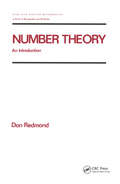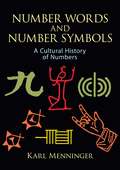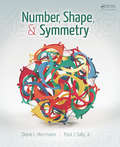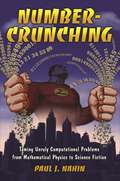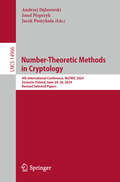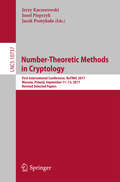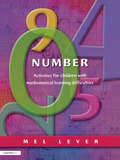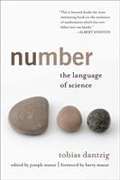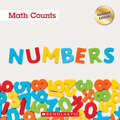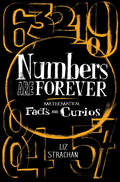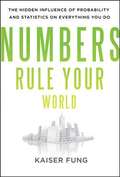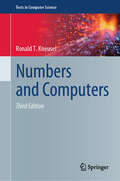- Table View
- List View
Number Theory: An Introduction to Pure and Applied Mathematics (Chapman And Hall/crc Pure And Applied Mathematics Ser. #201)
by Don RedmondThis text provides a detailed introduction to number theory, demonstrating how other areas of mathematics enter into the study of the properties of natural numbers. It contains problem sets within each section and at the end of each chapter to reinforce essential concepts, and includes up-to-date information on divisibility problems, polynomial congruence, the sums of squares and trigonometric sums.;Five or more copies may be ordered by college or university bookstores at a special price, available on application.
Number Theory: The Theory Of Partitions (Dover Books on Mathematics #Vol. 2)
by George E. AndrewsAlthough mathematics majors are usually conversant with number theory by the time they have completed a course in abstract algebra, other undergraduates, especially those in education and the liberal arts, often need a more basic introduction to the topic.In this book the author solves the problem of maintaining the interest of students at both levels by offering a combinatorial approach to elementary number theory. In studying number theory from such a perspective, mathematics majors are spared repetition and provided with new insights, while other students benefit from the consequent simplicity of the proofs for many theorems.Among the topics covered in this accessible, carefully designed introduction are multiplicativity-divisibility, including the fundamental theorem of arithmetic, combinatorial and computational number theory, congruences, arithmetic functions, primitive roots and prime numbers. Later chapters offer lucid treatments of quadratic congruences, additivity (including partition theory) and geometric number theory.Of particular importance in this text is the author's emphasis on the value of numerical examples in number theory and the role of computers in obtaining such examples. Exercises provide opportunities for constructing numerical tables with or without a computer. Students can then derive conjectures from such numerical tables, after which relevant theorems will seem natural and well-motivated..
Number Words and Number Symbols: A Cultural History of Numbers
by Karl MenningerThis book is not only a fascinating introduction to the concept of number and to numbers themselves, hut a multifaceted linguistic and historical analysis of how numbers have developed and evolved in many different cultures. Drawing on evidence from history, literature, philosophy and ethnology, noted German scholar Karl Menninger. recounts the development of numbers both as they are spoken (and written as words) and as symbolic abstract numerals that can he readily manipulated and combined.Despite the immense erudition the author brings to the topic, he maintains a light tone throughout, presenting much of the information in anecdotal form. Moreover, almost 300 illustrations (photographs and drawings) and many comparative language tables serve to enhance the text. The author begins with a lucid treatment of number sequence and number language, including the formation of number words in both Indo-European and non-IndoEuropean languages, hidden number words and the evolution of the number sequence. He then turns to written numerals and computations: finger counting, folk symbols for numbers, alphabetical numerals, the "German" Roman numerals, the abacus and more. The final section concerns the development of our modem decimal system, with its place notation and zero, based on the Indian number system, and its introduction to the West through the work of the Italian mathematician Fibonacci. The author concludes with a review of spoken numbers and number symbols in China and Japan.
Number, Shape, & Symmetry: An Introduction to Number Theory, Geometry, and Group Theory
by Diane L. Herrmann Paul J. Sally Jr.Through a careful treatment of number theory and geometry, Number, Shape, & Symmetry: An Introduction to Number Theory, Geometry, and Group Theory helps readers understand serious mathematical ideas and proofs. Classroom-tested, the book draws on the authors' successful work with undergraduate students at the University of Chicago, seventh
Number-Crunching: Taming Unruly Computational Problems from Mathematical Physics to Science Fiction
by Paul J. NahinMore stimulating mathematics puzzles from bestselling author Paul NahinHow do technicians repair broken communications cables at the bottom of the ocean without actually seeing them? What's the likelihood of plucking a needle out of a haystack the size of the Earth? And is it possible to use computers to create a universal library of everything ever written or every photo ever taken? These are just some of the intriguing questions that best-selling popular math writer Paul Nahin tackles in Number-Crunching. Through brilliant math ideas and entertaining stories, Nahin demonstrates how odd and unusual math problems can be solved by bringing together basic physics ideas and today's powerful computers. Some of the outcomes discussed are so counterintuitive they will leave readers astonished.Nahin looks at how the art of number-crunching has changed since the advent of computers, and how high-speed technology helps to solve fascinating conundrums such as the three-body, Monte Carlo, leapfrog, and gambler's ruin problems. Along the way, Nahin traverses topics that include algebra, trigonometry, geometry, calculus, number theory, differential equations, Fourier series, electronics, and computers in science fiction. He gives historical background for the problems presented, offers many examples and numerous challenges, supplies MATLAB codes for all the theories discussed, and includes detailed and complete solutions.Exploring the intimate relationship between mathematics, physics, and the tremendous power of modern computers, Number-Crunching will appeal to anyone interested in understanding how these three important fields join forces to solve today's thorniest puzzles.
Number-Theoretic Methods in Cryptology: 4th International Conference, NuTMiC 2024, Szczecin, Poland, June 24–26, 2024, Revised Selected Papers (Lecture Notes in Computer Science #14966)
by Josef Pieprzyk Jacek Pomykała Andrzej DąbrowskiThis book constitutes the refereed post-conference proceedings of the 4th International Conference on Number-Theoretic Methods in Cryptology, NuTMiC 2024, held in Szczecin, Poland, during June 24–26, 2024.The 9 full papers and 2 invited papers presented in this book were carefully reviewed and selected from 12 submissions. They were organized in topical sections as follows: invited talks; elliptic curves in cryptography; number theory; algebraic structures and public-key cryptography.
Number-Theoretic Methods in Cryptology: First International Conference, Nutmic 2017, Warsaw, Poland, September 11-13, 2017, Revised Selected Papers (Lecture Notes in Computer Science #10737)
by Josef Pieprzyk Jerzy Kaczorowski Jacek PomykałaThis book constitutes the refereed post-conference proceedings of the First International Conference on Number-Theoretic Methods in Cryptology, NuTMiC 2017, held in Warsaw, Poland, in September 2017.The 15 revised full papers presented in this book together with 3 invited talks were carefully reviewed and selected from 32 initial submissions. The papers are organized in topical sections on elliptic curves in cryptography; public-key cryptography; lattices in cryptography; number theory; pseudorandomness; and algebraic structures and analysis.
Number: Activities for Children with Mathematical Learning Difficulties
by Mel LeverFirst Published in 2003. Routledge is an imprint of Taylor & Francis, an informa company.
Number: The Language of Science
by Tobias DantzigNumber is an eloquent, accessible tour de force that reveals how the concept of number evolved from prehistoric times through the twentieth century. Renowned professor of mathematics Tobias Dantzig shows that the development of math—from the invention of counting to the discovery of infinity—is a profoundly human story that progressed by “trying and erring, by groping and stumbling.” He shows how commerce, war, and religion led to advances in math, and he recounts the stories of individuals whose breakthroughs expanded the concept of number and created the mathematics that we know today.
Numbers
by Paul ThurlbyAn incredibly stylish numbers book - perfect for children and adults alike.Have fun with numbers with an award-winning illustrator. Paul creates an amazing world where each number becomes its word. From '3 for 3D' and '5 for high five' to '10 for a perfect 10', each number is familiar, yet unique. Praise for Alphabet: 'Skilfully constructed and cleverley composed, it's an awesome alphabet book that adults will also appreciate.' Kirkus Reviews'Paul Thurlby's prints are so ludicrously beautiful that I am seriously tempted to blow the budget, order the whole lot and paper a wall with them.' India Knight, journalist and author
Numbers (Math Counts: Updated Editions)
by Henry PluckroseAn introduction to capacity for the youngest readers!Math Counts series introduces young readers (grades K-3) to early math concepts. Real-world examples and corresponding photos make math concepts easy to grasp.Numbers help us in many ways by giving us all types of information-from a person's addresses to the size of a dress and more.
Numbers (Picture This)
by Judith NouvionNumbers are everywhere in nature. From one tiny red-eyed frog to ten sweet and scruffy dogs, children will practice counting to ten all while finding out some fun facts about animals in our natural world. Vibrant photography and simple, fun read-aloud text make this board book a perfect first look at nonfiction for very new and curious learners! The Picture This series pairs learning concepts with extraordinary photographs of animals in their habitats. Check out all four books in the Picture This series: Colors, Homes, Numbers, and Shapes!
Numbers Are Forever
by Liz StrachanThis book is only about numbers - that is, whole numbers and nothing but the whole numbers, which start from from 0, 1, 2, 3, 4... and go on forever. Here you can meet perfect numbers, happy numbers, lucky, untouchable, weird, narcissistic, evil and deficient numbers, not to mention nice Friedmans and multi-legged repunits, as well as primes and their cousins, the sexy primes. It is also full of fascinating facts and curios, prime number conjectures, the sieve of Eratosthenes, the Fibonacci series, and much more besides. This is an accessible, clearly explained approach which will appeal to recreational maths enthusiasts, puzzle solvers, and mathematicians of all ages.
Numbers Are Forever
by Liz StrachanThis book is only about numbers - that is, whole numbers and nothing but the whole numbers, which start from from 0, 1, 2, 3, 4... and go on forever. Here you can meet perfect numbers, happy numbers, lucky, untouchable, weird, narcissistic, evil and deficient numbers, not to mention nice Friedmans and multi-legged repunits, as well as primes and their cousins, the sexy primes. It is also full of fascinating facts and curios, prime number conjectures, the sieve of Eratosthenes, the Fibonacci series, and much more besides. This is an accessible, clearly explained approach which will appeal to recreational maths enthusiasts, puzzle solvers, and mathematicians of all ages.
Numbers Don't Lie: 71 Stories to Help Us Understand the Modern World
by Vaclav Smil"There is no author whose books I look forward to more than Vaclav Smil."--Bill GatesAn essential guide to understanding how numbers reveal the true state of our world--exploring a wide range of topics including energy, the environment, technology, transportation, and food production.Vaclav Smil's mission is to make facts matter. An environmental scientist, policy analyst, and a hugely prolific author, he is Bill Gates' go-to guy for making sense of our world. In Numbers Don't Lie, Smil answers questions such as: What's worse for the environment--your car or your phone? How much do the world's cows weigh (and what does it matter)? And what makes people happy? From data about our societies and populations, through measures of the fuels and foods that energize them, to the impact of transportation and inventions of our modern world--and how all of this affects the planet itself--in Numbers Don't Lie, Vaclav Smil takes us on a fact-finding adventure, using surprising statistics and illuminating graphs to challenge conventional thinking. Packed with fascinating information and memorable examples, Numbers Don't Lie reveals how the US is leading a rising worldwide trend in chicken consumption, that vaccination yields the best return on investment, and why electric cars aren't as great as we think (yet). Urgent and essential, with a mix of science, history, and wit--all in bite-sized chapters on a broad range of topics--Numbers Don't Lie inspires readers to interrogate what they take to be true.
Numbers Queen: A QUIX Book (Addy McBean #1)
by Margery CuylerA second-grade math whiz uses her beloved numbers to get herself out of trouble and ace a class project in this first book in the Addy McBean series—part of the Aladdin QUIX line!Addy McBean, a second grader at PS #8, is up to her eyebrows (two) in myriad (lots) adventures. She&’s never met a number she hasn&’t liked! When she&’s paired with Willard—a classmate who&’s not exactly her favorite—for a math project, Addy has to figure out a way to juggle Willard, numbers, and finishing the project!
Numbers Rule Your World: The Hidden Influence of Probability and Statistics on Everything You Do
by Kaiser FungThis fascinating book takes readers inside the hidden world of facts and figures that affect them every day.
Numbers Rule: The Vexing Mathematics of Democracy, from Plato to the Present
by George SzpiroA lively history of the peculiar math of votingSince the very birth of democracy in ancient Greece, the simple act of voting has given rise to mathematical paradoxes that have puzzled some of the greatest philosophers, statesmen, and mathematicians. Numbers Rule traces the epic quest by these thinkers to create a more perfect democracy and adapt to the ever-changing demands that each new generation places on our democratic institutions.In a sweeping narrative that combines history, biography, and mathematics, George Szpiro details the fascinating lives and big ideas of great minds such as Plato, Pliny the Younger, Ramon Llull, Pierre Simon Laplace, Thomas Jefferson, Alexander Hamilton, John von Neumann, and Kenneth Arrow, among many others. Each chapter in this riveting book tells the story of one or more of these visionaries and the problem they sought to overcome, like the Marquis de Condorcet, the eighteenth-century French nobleman who demonstrated that a majority vote in an election might not necessarily result in a clear winner. Szpiro takes readers from ancient Greece and Rome to medieval Europe, from the founding of the American republic and the French Revolution to today's high-stakes elective politics. He explains how mathematical paradoxes and enigmas can crop up in virtually any voting arena, from electing a class president, a pope, or prime minister to the apportionment of seats in Congress.Numbers Rule describes the trials and triumphs of the thinkers down through the ages who have dared the odds in pursuit of a just and equitable democracy.
Numbers and Computers
by Ronald T. KneuselThis is a book about numbers and how those numbers are represented in and operated on by computers. It is crucial that developers understand this area because the numerical operations allowed by computers, and the limitations of those operations, especially in the area of floating point math, affect virtually everything people try to do with computers. This book aims to fill this gap by exploring, in sufficient but not overwhelming detail, just what it is that computers do with numbers. Divided into two parts, the first deals with standard representations of integers and floating point numbers, while the second details several other number representations. Each chapter ends with exercises to review the key points. Topics covered include interval arithmetic, fixed-point numbers, floating point numbers, big integers and rational arithmetic. This book is for anyone who develops software including software engineerings, scientists, computer science students, engineering students and anyone who programs for fun.
Numbers and Computers
by Ronald T. KneuselThis is a book about numbers and how those numbers are represented in and operated on by computers. It is crucial that developers understand this area because the numerical operations allowed by computers, and the limitations of those operations, especially in the area of floating point math, affect virtually everything people try to do with computers. This book aims to fill this gap by exploring, in sufficient but not overwhelming detail, just what it is that computers do with numbers. Divided into two parts, the first deals with standard representations of integers and floating point numbers, while the second examines several other number representations. Details are explained thoroughly, with clarity and specificity. Each chapter ends with a summary, recommendations, carefully selected references, and exercises to review the key points. Topics covered include interval arithmetic, fixed-point numbers, big integers and rational arithmetic. This new edition has three new chapters: Pitfalls of Floating-Point Numbers (and How to Avoid Them), Arbitrary Precision Floating Point, and Other Number Systems. This book is for anyone who develops software including software engineers, scientists, computer science students, engineering students and anyone who programs for fun.
Numbers and Computers (Texts in Computer Science)
by Ronald T. KneuselThis textbook details the variety of number formats used by computers, thereby helping to ground readers in what can and cannot be represented accurately, especially by floating-point numbers. The book's first part details standard representations of integers and floating-point numbers. The second explores other number representations, including the wide variety recently developed to support artificial intelligence (AI) and its demand for efficiency in representation to accommodate the ever-expanding scope of neural network models. Chapters describe each format, with examples in code (Python and C) and exercises. This new edition includes three new chapters on posits, AI number formats, and a collaborative experiment with an AI to generate novel number formats. Topics and features: Explores how computers use numbers to complete operations Adds new chapters on posits and AI number formats Includes exercises and examples that are code snippets in C or Python Implements and tests new AI-designed number formats (as designed by GPT-4) Provides thorough grounding on what can and cannot be represented accurately A textbook eminently suitable for undergraduates in computer science, the work also will appeal to software developers, engineers, scientists, AI experts, and anyone who programs for fun.
Numbers and Functions
by R. P. BurnThe transition from studying calculus in schools to studying mathematical analysis at university is notoriously difficult. In this new edition of Numbers and Functions, Dr Burn invites the student reader to tackle each of the key concepts in turn, progressing from experience through a structured sequence of several hundred problems to concepts, definitions and proofs of classical real analysis. The sequence of problems, which all have solutions supplied, draws students into constructing definitions and theorems for themselves. This natural development is informed and complemented by historical insight. The novel approach to rigorous analysis offered here is designed to enable students to grow in confidence and skill and thus overcome the traditional difficulties.
Numbers and Other Math Ideas Come Alive
by Theoni PappasMost people don't think about numbers, or take them for granted. For the average person numbers are looked upon as cold, clinical, inanimate objects. Math ideas are viewed as something to get a job done or a problem solved. Get ready for a big surprise with Numbers and Other Math Ideas Come Alive. Pappas explores mathematical ideas by looking behind the scenes of what numbers, points, lines, and other concepts are saying and thinking. In each story, properties and characteristics of math ideas are entertainingly uncovered and explained through the dialogues and actions of its math characters. In fact, you forget that you are actually learning mathematics as you get caught up in the characters' private lives, secrets and how they interact with one another. You may even forget that these math actors come from the imaginary worlds of mathematics. They seem so real! This is the crux of Numbers and Other Math Ideas Come Alive -- number and math ideas tell their own stories in their own words. As you read these stories you will be amazed at how math ideas come to life and develop their own personalities. We learn about their foibles and strengths, and see why mathematicians had to develop new concepts when the old ones were not sufficient for the problems at hand. You'll see how mathematics is constantly evolving. How new numbers appeared, and old ones were reticent to accept the newcomers. How certain math ideas lay hidden for centuries, until they were resurrected or discovered by a mathematician. Love, hate, jealousy, excitement--all emotions we associate with human behavior are taken on by these math characters. You will come away learning how indispensable these math ideas and their roles are in our world today.
Numbers and Stories: Using Children's Literature to Teach Young Children Number Sense
by Ms Rita C. Janes Ms Elizabeth L. StrongCount on children’s books to build number sense! Math and reading go hand in hand, especially among children who are new to both. If you’re looking for a surefire way to build number sense and reading skills at the very same time, rely on this indispensable K-2 resource. Using children’s books as a springboard for learning, it provides 22 ready-to-use lessons—all aligned to the Common Core Standards for Math and ELA. Inside you’ll find 22 interactive, research-based mathematics investigations High-quality children’s book selections Reflection and discussion questions and prompts for both teachers and students Children’s work pages and formative assessment tools An online facilitator’s guide
Numbers and Symmetry: An Introduction to Algebra
by Bernard L. JohnstonThis textbook presents modern algebra from the ground up using numbers and symmetry. The idea of a ring and of a field are introduced in the context of concrete number systems. Groups arise from considering transformations of simple geometric objects. The analysis of symmetry provides the student with a visual introduction to the central algebraic notion of isomorphism.Designed for a typical one-semester undergraduate course in modern algebra, it provides a gentle introduction to the subject by allowing students to see the ideas at work in accessible examples, rather than plunging them immediately into a sea of formalism. The student is involved at once with interesting algebraic structures, such as the Gaussian integers and the various rings of integers modulo n, and is encouraged to take the time to explore and become familiar with those structures.In terms of classical algebraic structures, the text divides roughly into three parts:
